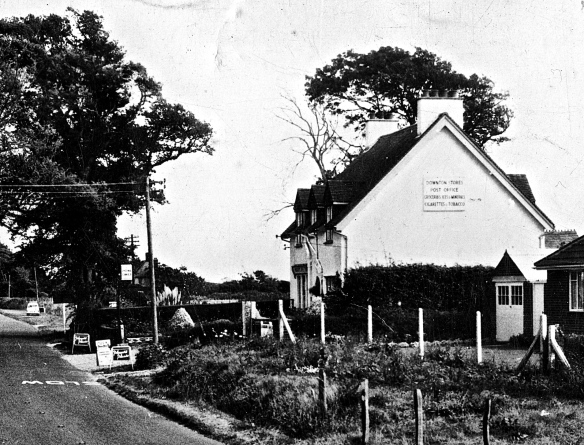 It is quite a pleasant stage we have reached in the garden project. We are able to tackle tasks in tandem, rather than each being occupied at different ones. Thus, we did some planting together, notably the agapanthuses purchased a day or two ago. This involved digging through what felt like ironstone, moving other plants to make room for it, and transporting better soil from elsewhere.
It is quite a pleasant stage we have reached in the garden project. We are able to tackle tasks in tandem, rather than each being occupied at different ones. Thus, we did some planting together, notably the agapanthuses purchased a day or two ago. This involved digging through what felt like ironstone, moving other plants to make room for it, and transporting better soil from elsewhere.
 Similarly, to enable me to border the shady path with granite sets, a couple of clumps of trespassing geraniums were dug out and offered alternative accommodation. The sets were required because the line of edge tiles petered out near the decking. There is no one material used throughout the garden, so it is quite fun to make a patchwork quilt with what is available.
Similarly, to enable me to border the shady path with granite sets, a couple of clumps of trespassing geraniums were dug out and offered alternative accommodation. The sets were required because the line of edge tiles petered out near the decking. There is no one material used throughout the garden, so it is quite fun to make a patchwork quilt with what is available.
 We fine-tuned the end of the head gardener’s path as it winds around the fir tree, and, bit by bit, as the day progressed set the slabs firmly in their bed of stony soil. There then ensued a search around the garden for stones with which to fill the fissures that create the curves winding through the inchoate shrubbery. It must be sod’s law that when you are digging a bed you find loads of them, but when you want some they are hard to come by.
We fine-tuned the end of the head gardener’s path as it winds around the fir tree, and, bit by bit, as the day progressed set the slabs firmly in their bed of stony soil. There then ensued a search around the garden for stones with which to fill the fissures that create the curves winding through the inchoate shrubbery. It must be sod’s law that when you are digging a bed you find loads of them, but when you want some they are hard to come by.
When we moved in here we found on the orange-painted home-made mantelpiece, a welcoming note and a tiny framed black and white photograph. The image measures 11 x 7.5 centimetres. It is picture of our house as it was, we estimate, in the 1960s. Then it was the village shop. One set of chimneys has since been removed, and we have a garage extension. A bay at the front has replaced the shop front.  The current view from the rear displays, centrally, our kitchen extension with its skylight. To the left of this was originally a pitched roof. To the right of the modern picture can be seen the more recent roof over our master suite.
The current view from the rear displays, centrally, our kitchen extension with its skylight. To the left of this was originally a pitched roof. To the right of the modern picture can be seen the more recent roof over our master suite.
We were intrigued to learn what were the signs standing at the front and the legend on the side of the house, but these were indiscernible to the naked eye, and a magnifying glass didn’t help. I removed the picture from its frame, and discovered it was a Frith’s postcard.
 I then enlarged the image and was able to read:
I then enlarged the image and was able to read:
Notices in the forecourt announced that the shop was open, and sold Players cigarettes and Lyons cakes. The Players Please board was on display in London’s Lime Street in August 1963. The story of the tobacco company was told on November 27th 2013.
Francis Frith was a pioneering mid-to-late-Victorian photographer who founded the postcard company in the 1850s. There is now a massive archive which is a fascinating collection of UK views. Although Frith died in 1898, his company lived on, with the occasional hiatus. The archives were bought from Rothman’s by John Buck in 1977, and continue to function as the Francis Frith Collection.
Interestingly, Frith’s places us in Lymington Road. Local maps, for example the one outside New Milton railway station, vary as to whether we are in Christchurch Road or Lymington Road. The modern Post Office gives our address as Christchurch Road. Where one merges into the other remains a mystery.
This evening we dined on a refreshing salad based on pork pie and pastrami. I drank half a glass of Cotes du Rhone Villages 2012 and Jackie had a few sips of her Hoegaarden. We then drove down to the beach and bagged a few stones to supplement those in the path completed today.